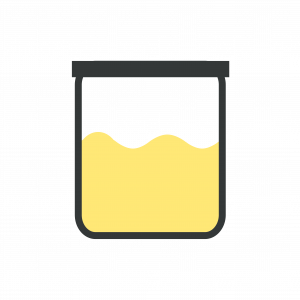12
Olivia Tidwell

Drug testing is the ability to screen for the presences of both illicit and legal drugs within someone’s body (Smith, 2013). In the United States, drug testing became prevalent due to the introduction by the Department of Defense in order to test their military personnel in the 1960s (Smith, 2013). Since then drug testing has been introduced in the workplace due to increased anti-drug attitudes during the 1980s (Smith, 2013). The transportation, energy, and other “safety-sensitive” sectors of the economy rely on drug testing of their workers (Smith, 2013). However, a drug test can be conducted by any employer both upon application and in the duration of one’s employment there (McCarty, 2014). Companies can screen for marijuana, cocaine, opiates, amphetamines, tobacco, and other aspects that may hinder job performance and increase company liability (Smith, 2013). However, drug tests can deter people from obtaining employment and invade on employees’ privacy. Drug testing in the workplace is considered a modern application of the philosophy of Henry Ford. Under his employment, Ford would bring evaluators to the employee’s homes to inspect for habits of gambling, alcoholism, and other indicators of their morality (Gilliom, 2013). Ford was able to extend the reach of employers into the private lives of his employees, a practice that continues today via corporate drug testing.
Along with its presence in the workplace, drug testing has become a vital aspect of the U.S.’s welfare and entitlement programs. Temporary Assistance for Needy Families (TANF) is a grant program that is funded by the federal government (McCarty, 2014). This money is given to the states to use and implement with their discretion. Some states have implemented drug testing for applicants and recipients of this entitlement (Office of the Assistant Secretary for Policy and Evaluation, 2011). In addition, some states require a personal questionnaire that may result in a drug test by the overseeing agency (CLASP, 2016). Other entitlement programs like the Supplemental Nutrition Assistance Program (SNAP) and federal housing assistance do not have explicit protections for applicants against drug testing; thus their implementation has followed that of TANF (McCarty, 2014). Despite strong political support for welfare drug testing, the system is largely ineffective as the vast majority of welfare recipients are not dependent on illicit drugs. A 2002 study showed that only 4% of welfare recipients are drug depended and only 11% would use drugs recreationally (Walker, 2018). These programs then deny assistance to those who fail such tests and restrict aid to applicants who possess a drug-related felony (McCarty, 2014). Drug testing contributes to the surveillance society because it allows employers to mandate the actions of an employee outside of work hours. Drug testing also creates a system against those who suffer from drug addiction as they will be unable to get or maintain a job due to drug testing and then will be unable to receive the need assistance from the government due to their lack of employment.
References
Hall, R. (2016). Drug testing and public assistance. CLASP: Policy solutions that work for low-income people. Retrieved from: https://www.clasp.org/sites/default/files/publications/2017/04/2016.02.04-Drug-Testing-and-Public-Assistance-Brief-FINAL.pdf
Gilliom, J., & Monahan, T. (2013). SuperVision: An introduction to the surveillance society. Chicago, IL: University of Chicago Press.
McCarty, M. (2014). Drug testing and crime-related restrictions in TANF, SNAP, and housing assistance. Congressional Research Service.
Office of the Assistant Secretary for Policy and Evaluation. (2011) Drug testing welfare recipients: Recent proposals and continuing controversies. U.S. Department of Health & Human Services.
Smith, V. (2013). Sociology of work : An encyclopedia. Thousand Oaks, California: SAGE Publications, Inc.
Walker, M.J. (2018). An argument against drug testing welfare recipients. Kennedy Institute of Ethics Journal, 28.
